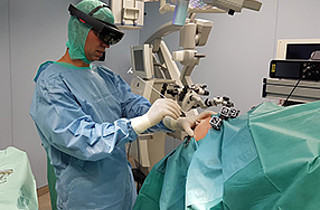Heart models for the treatment of atrial fibrillation
Although atrial fibrillation is not a life-threatening condition, it is the most common form of cardiac arrhythmia. If the disease is detected at an early stage, it can be treated well with medication or catheter ablation. However, if the atrial fibrillation persists, the chances of success with conventional treatment drop to less than 50 percent.
State of the art
Targeted scarring of specific tissue areas of the heart using a catheter (catheter ablation) helps to correct the disorder. However, the same treatment is not suitable for all sufferers, as each heart is individual due to anatomical and functional differences.
Technology
In order to find out patient-specifically which tissue has to be scarred and how, researchers of the KIT Institute of Biomedical Engineering (IBT) have developed a method to test the treatment on personalized heart models. Both magnetic resonance imaging data and electroanatomical measurements are used to create the individual digital heart models. Image processing is used to convert the data into a three-dimensional model, taking into account a reference model, and enrich it with general as well as patient-specific information. For example, pulmonary veins are identified. Individual information is, for example, the strength of cardiac contraction or the speed of propagation of electrical excitation. The anatomical landmarks that divide the heart into specific areas are automatically placed in the model using image recognition and enable more precise treatment. Various strategies can be tested on the model to find out simulatively whether the cardiac arrhythmia can still be triggered. If not, a promising ablation site has been found.
Advantages
This method, which has so far only been tested in a research environment, increases the accuracy and safety of catheter ablations. The KIT technology enables the automated creation of patient-specific atrial models. Personalized treatment planning increases the sustainable success of catheter ablations performed and the treatment outcome for affected patients.
Options for companies
KIT is looking for research partners to evaluate the technology in prospective studies. The aim is to prove the effectiveness of the procedure and to prepare it for real-world use.
Your contact person for this offer

Innovation Manager New Materials, Climate and Environment Karlsruhe Institute of Technology (KIT)
Innovation and Relations Management (IRM) Phone: +49 721 608-26107
Email: jan-niklas.bloetz@kit.edu






